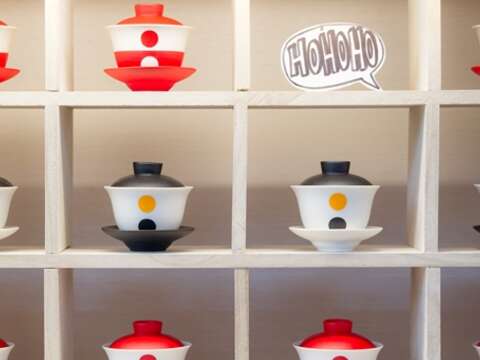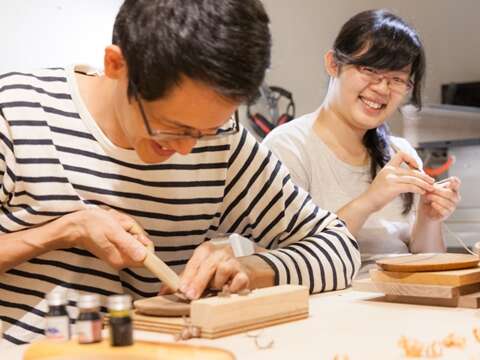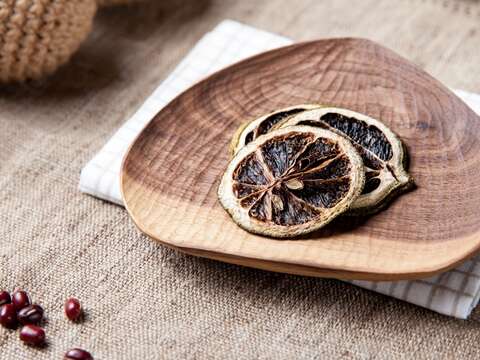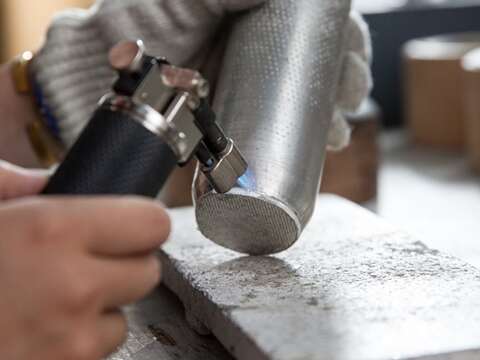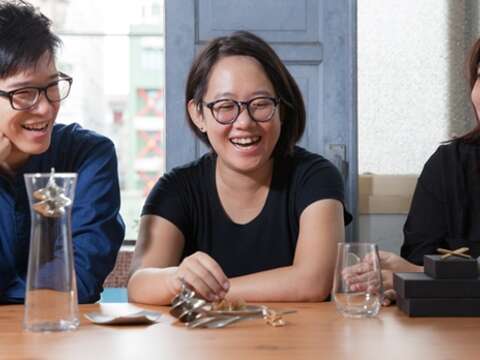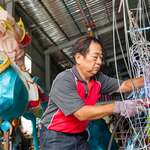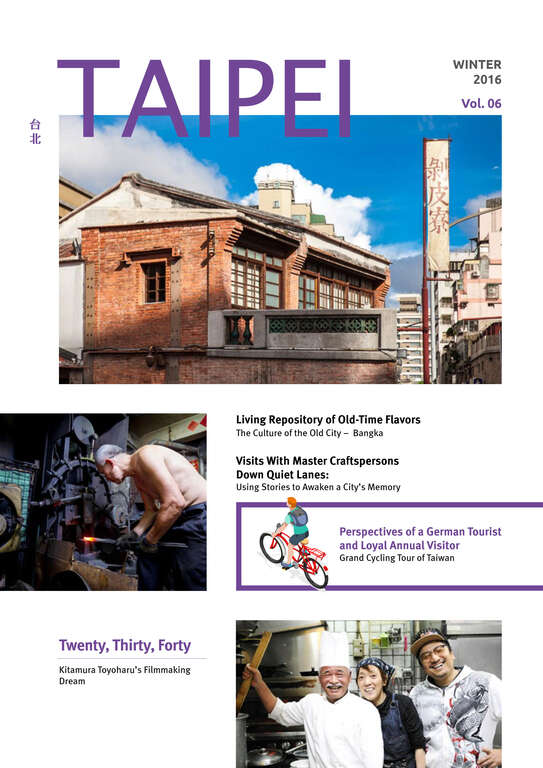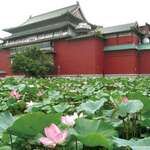Post date:2017-03-10
1785
Wood Products, Tinware, Ceramic Art
Daily Use Items Infused With the Warmth of ‘Handmade’
Article_Du Yunru
Photos_Shi Chuntai, Woo Collective
When daily-use objects are infused with “handmade” warmth, they are no longer mere implements. Rather, they enhance the esthetic style of the home. In Taipei, artisans and designers use their ingenuity and creativity to transform traditional materials through touch, embellishing the city’s already pleasant every day.
Warm Wood for Decorating the Home
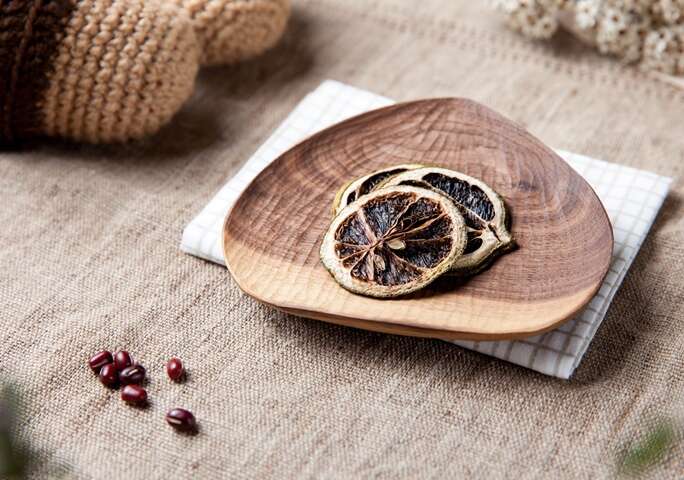
▲ Although wood art appears to have simple lines and curves, it possesses the ingenuity and skills of its creator. (Photo: Shi Chuntai )
Wood is a type of natural material with many uses, including the making of a diversity of everyday items. Each piece of wood has a distinctive grain, creating a unique esthetics. Moreover, its gentle quality and natural aroma bring a sense of warmth and a reassuring energy. This magical power is what inspired Woodline (木質線) partners Lin Guisheng (林貴生) and Yu Wan (魚丸) to enter the world of wood art.
Lin has been professionally trained. In vocational school he began learning how to make models from wood, and at a very young age won many wood-model competitions and awards. In college he came in contact with ceramic arts, which helped to train his keen sense of esthetics, as well as provide inspiration for his wood creations. His good friend, Yu Wan, has a love of weaving, and came in contact with woodworking as a way to build his own weaving equipment. The two decided to collaborate and establish Woodline, a brand that incorporates the creative elements of wood and weaving.
Woodline mainly produces small-sized daily-use items with wood. Lin says that he hopes that his works will not just be put on display after being purchased, as after a long period of use the traces that come with usage become part of the wood, giving the works more style and charm. For example, if a wood handle is repeatedly touched over a period of time, it will become smooth and develop a bright sheen. On the contrary, if wood items are not often used and not preserved under suitable conditions, they can easily become moldy or damaged. Handmade wooden items are warm artworks. Whether bowls, chopsticks, or spoons to be placed on a table, these items, used three meals per day, will not only bring about a cheerful and positive mood, but also enhance the taste of one’s food.
Hard-to-Handle Wood Results in Unique Refinement
Looking at a spoon or a cutting block, there may be the misconception that it was simple to produce. On the contrary, many methods and skills were involved. For example, to create a shallow dish requires starting with a rough design sketch. The wood must then be cut to the appropriate thickness. The depth and arc are achieved through chiseling. This is followed by sanding and polishing, and the application of protective oil or paint. The process takes several hours and involves many steps. Added to this are differences in the type of wood and original position in the tree. This produces differences in hardness and grain. Techniques and applied force must be adjusted accordingly. Lin laughs as he says that, “Some wood is very mischievous. You plainly created a circular shape, but the next day it has become oval in shape. The finished product may therefore be different from the original design. This often happens. I can only say that wood has its own personality, and can be a difficult material to handle. More often than not, artists have a love-hate relationship with wood.”
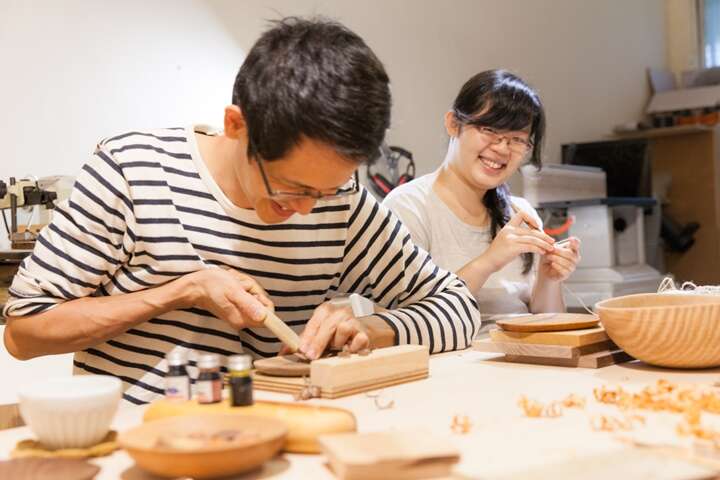
▲ Their love of the warm quality and aroma of wood inspired Lin Gui-sheng (left) and Yu Wan (right) to establish the Woodline brand. (Photo: Shi Chuntai )
To enable more people to experience the beauty of wood-produced items, Woodline offers courses in creating handmade works. Those with an interest can learn simple wood-crafting techniques, as well as design and create their own woodworks. What is interesting to note is that many of these students, once they learn the skills, buy materials in large quantity to produce wooden chopsticks, plates, and pens at home to give as gifts to friends and family members.
One of the advantages of working with wood is that it is possible to reuse the edges and corners not wanted by wood factories. There is even expensive wood left over from the production of large pieces of furniture. However, because these are odd pieces that are inconsistent in shape, they test the ingenuity of the artist, and can be the best materials for practicing basic skills. Therefore, whenever they have time Lin and Yu Wan visit large wood factories to “search for treasure.” Sometimes what is considered waste material, after being crafted by these two artisans, undergoes metamorphosis to emerge as a small artwork that is both practical and beautiful, giving new life to discarded wood.
Artisan Recommendation!
Functional yet traditional daily-use item
Wooden tub
For those who grew up in a farming community in Taiwan, the memory of the wooden tub is a familiar one. Wooden tubs for bathing came in various sizes and shapes. There were also wooden rice buckets and water buckets. In the past, wooden tubs and buckets were indispensable items in the home, especially wooden buckets used for cooking rice. The wood added a delicate fragrance to the rice, and it was the best container for steaming rice.
Woodline 木質線
Has a booth some Sundays at the 44 South Village Simple Market (四四南村簡單市集).
Wood crafts classes are offered on a continuous basis.
54, Songqin St. (松勤街54號)
Forging New Fashion Trends for Traditional Tinware
In Chinese the word for tin is xi (錫). In the Hokkien (福建) dialect this sounds similar to ci (賜), which means blessing. Thus, at traditional rites many of the utensils on the table, such as incense burners, candlesticks, and vases, were made from tin to symbolize “blessings.” From ancient times tinware, representative of an ancient eastern handicrafts, in addition to being used as ceremonial objects was often found among wealthy families, who liked to use tin water pitchers, wine pitchers, tableware, tea containers, and rouge boxes to highlight their status. However, as a result of lifestyle changes and the misconception that tin is toxic, there has been a gradual decrease in the use of tin and a decline in traditional tin handicrafts.
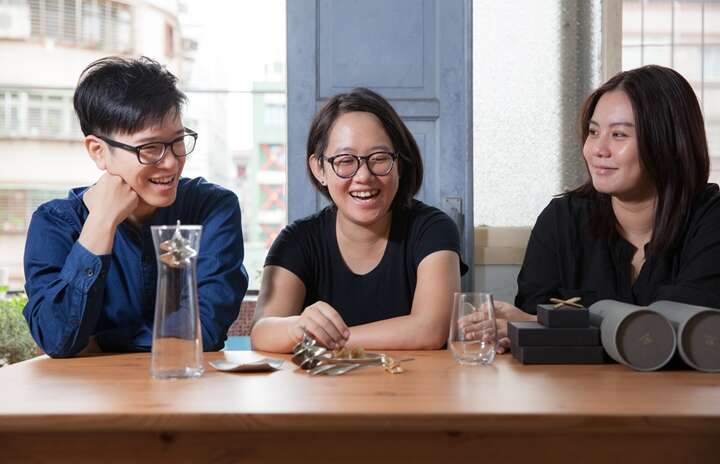
▲ The Woo Collective, founded by three young designers, has allowed traditional tin handicrafts to stand out on the international stage. (Photo: Shi Chuntai )
The Woo Collective was established by three young designers. They produce tin handicrafts that are extremely simple and exquisite, expressing unique Asian character, that have gained international attention. At first, however, tin was something quite unfamiliar to them. Through the National Taiwan Craft Research and Development Institute (國立臺灣工藝研究發展中心), these three designers had the opportunity to learn from national treasure and master tin artisan Chen Wanneng (陳萬能). At the same time, due to the courage of this team to take on an experimental spirit, they were gradually able to combine modern design esthetics with this centuries-old traditional art form. They have given tin art a whole new look, and tin handicrafts have once again come under the spotlight.
To create a work in tin, pieces of tin must first be melted. The liquid tin is then injected into a mold or pressed and formed into pieces. The work then goes through cutting, pounding, welding, filing, polishing, grinding, and washing to complete. Based on the size of the finished product, production time can vary from a few hours to a few months. One of the team members, Lai Siyu (賴思羽), says that, “Currently, it is difficult to find a tin-product factory in Taiwan to work with. We have to handle most of the production process ourselves. But, compared to the requirement for a complete set of equipment for producing glass or metal art, the threshold for producing tin works is low. All that is needed is mastery of the basic steps; then you can try more advanced techniques on your own.” However, as tin is relatively soft, if forging skills are lacking or unrefined it’s easy to damage the metal. For example, if the welding temperature isn’t high enough, it’s not possible to connect the pieces. If too high, it’s easy to melt and damage the work. Therefore, the production of tin works requires the artisan to be well versed in a variety of skills, as well as focused and patient enough not to rush the process.
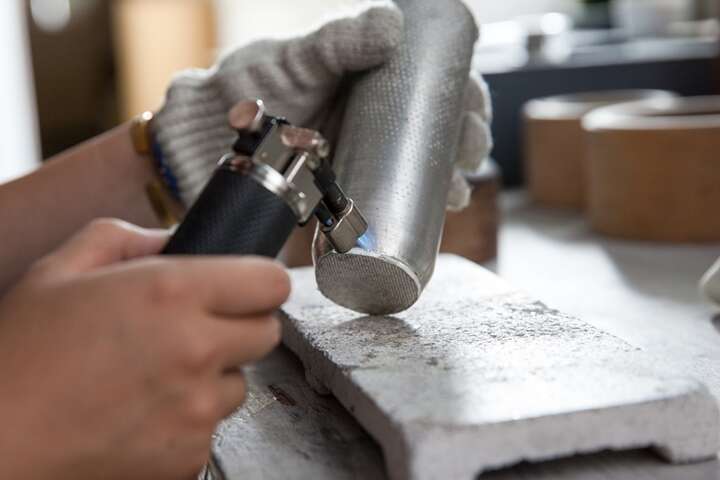
▲ It is very important that temperature is well controlled during welding. This requires complete focus. (Photo: Shi Chuntai )
Using the Simplest of Lines to Produce Asian-Style Esthetics
Tin is a non-toxic, tasteless, and not easily oxidized stable metal. At the same time, it has water-purification properties. In literature, it has been written that with use of tinware: “Liquor that is served becomes mellower, and water tastes fresher and sweeter. The color of tea will not change when stored, and flowers will last longer.” Many high-end Japanese restaurants serve sake in tin cups, for it is said the tin mellows the liquor.
The Woo Collective seeks to infuse its products with Asian esthetics, and hopes they naturally enter the lives of modern people. The designers have developed a natural-texture printing technique that creates lines similar to those of wood or cloth, producing simple and artistic tableware. New concepts have also been applied in the design of a pure-tin spiral for the mellowing of liquor. This is placed inside a glass wine decanter to increase contact between the wine and air, allowing the wine to rapidly breathe. Tin also retards the pungency of alcohol, helping to release the bouquet and making it richer and smoother.
In this way, practical items that fulfill the tastes of modern people have completely overthrown the negative stereotype of traditional tin handicrafts. Moreover, tin has once again become a symbol of fashionable esthetics.
Artisan Recommendation!
Functional yet traditional daily-use item
Incense burner
Worship and prayers for blessings are among Taiwan’s long-standing folk-religion customs. Incense burners are essential to worship practices, especially tin incense burners. This is because tin is associated with blessings. In addition to finding tin incense burners in temples, many families who worship gods or ancestors at home place a tin incense burner or Buddhist implement on the altar to represent respect for the ancestors
Woo Collective
Stores in Huashan 1914 Creative Park (華山1914文化創意產業園區), Eslite XinYi Branch (誠品信義店), The One Jhongshan (The One中山), and Fujin Tree 352, etc. For more details, check the official website.
Everyday Ceramics Evolve Into Trendy Items
Ceramics are commonplace items in daily life, such as bowls, plates, cups, tea sets, and vases. They have widespread uses. If a little bit of creativity and ingenuity are added, ordinary items can present incredible esthetics.
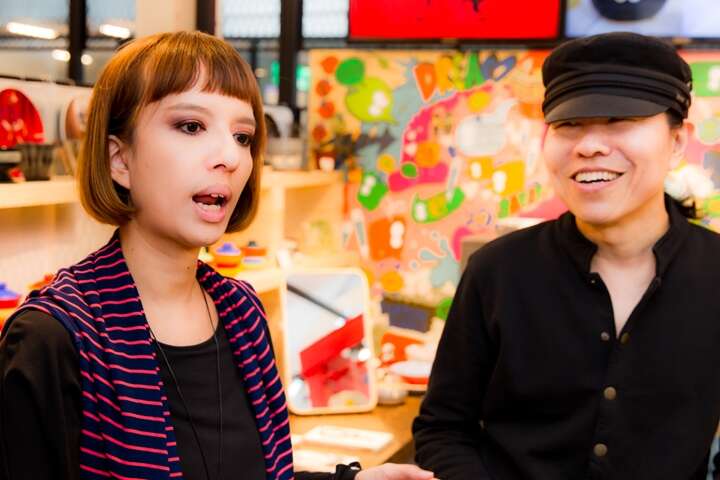
▲ Monkey (right) and Donkey (left) are from Hong Kong. Their love of Taipei’s cultural-creative industry environment brought them to Taiwan to establish their brand. (Photo: Shi Chuntai )
Ceramics are produced from a mixture of clay and sand. After kneading and sculpting, ceramic artworks are fired to become finished products. Based on the artist’s imagination, different colors, patterns, and forms can be created. These can serve as decorative artworks or items for practical use. Two Hong Kong artists/designers Monkey and Donkey, amazed at the diversity and malleability of ceramics, decided to use them as their creative materials, and whimsically develop interesting, ever-changing ideas.
Monkey and Donkey found it difficult in Hong Kong to access the materials and firing techniques needed to produce ceramics. Although the firing of ceramics in China is low-cost, it is not of sophisticated quality, and not equal to that of Taiwan. Additionally, Taipei City’s arts and cultural-creative industry environment is continuously growing. The two wanted a space in which they could freely create, and decided to come to Taiwan to establish their brand, Monkey And Donkey Design (驢仔窯. 馬騮燒).
A better idea of their creative concept comes from a look at their trademark. “Monkey” and “Donkey” are based on the pronunciation of their surnames in Cantonese. The imagery is delightful, and symbolizes strength without taking away from their personality or animated style. In addition to ceramic arts, Monkey and Donkey are adept at a variety of other art forms, including figurine sculpting, cartoon sketching, installation art, dynamic/static imagery, and mixed-media works. Moreover, they have an impressive record of overseas exhibitions and awards. Their experience has given them the confidence to break away from the traditional framework. It is no wonder their ceramics-design inspiration is so unrestrained and all-encompassing.
Creative Products Stimulate the Imagination
Displayed in their shop, located on the second floor of The Red House Creative Boutique (西門紅樓16工房), is a series of brightly colored tea sets, as well as cone-shaped ceramic containers that can be used as vases or cups. There is even a ceramic plate with comic strip-like dialogue frames. These innovative and unconventional forms stimulate the imagination. From their interactions with customers, Monkey and Donkey have discovered something very interesting. Generally, it is the international tourists who admire their designs and creativity and buy their works, while Taiwanese customers tend to place priority on “functionality.” The design duo believes, however, that no matter how beautiful something looks, it should also be practical. Any work can make life more beautiful, and should be chosen based on personal preference.
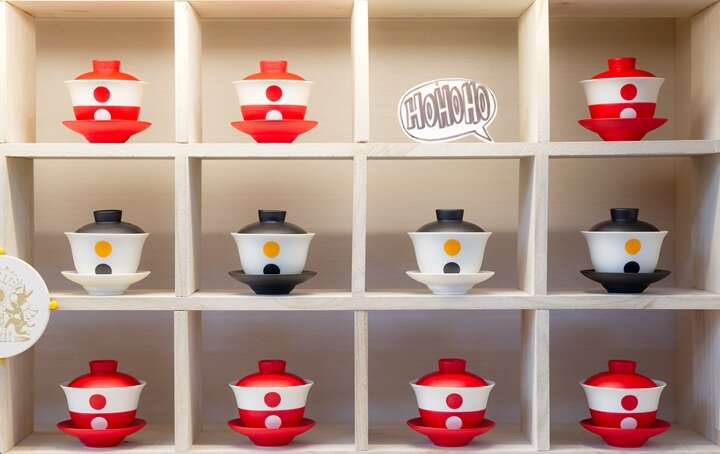
▲ Brightly colored tea cups break through the stereotype of traditional ceramic arts. (Photo: Shi Chuntai )
The most challenging aspects of ceramic production are the processes of applying glaze and firing. Variations in temperature in the kiln, and firing times, are the key to success or failure with ceramic works. Moreover, these are the hardest steps to control. Monkey forces a smile while saying, “Every time I put a new work into the kiln, it is a torture. You must wait two or three days to know what the work will look like, including any changes in the color or luster of the glaze or the lines. These can be entirely different from what you expected. But, sometimes, there is also a pleasant surprise!”
Each handmade ceramic work is thus unique. Even if the design and production methods are similar, the changes that come about during the firing make it impossible to create two identical works. This is the true allure of handmade products.
Artisan Recommendation!
Functional yet traditional daily-use item
Teapot
Taiwan’s tea culture is particular about the steeping and brewing of tea. This creates demand for sampling of good tea and good tea implements. Carving, engraving, painting, and inlay are used to decorate refined tea sets, adding to the visual value. Such sets are not only artworks to be collected, but when used also make the tea more mellow and flavorful.
Monkey And Donkey Design 驢仔窯 .馬騮燒
The Red House Creative Boutique / 2F D5 (西門紅樓16工房2樓D5)
10, Chengdu Rd. (成都路10號)
Wood Products, Tinware, Ceramic Art
Daily Use Items Infused With the Warmth of ‘Handmade’
Daily Use Items Infused With the Warmth of ‘Handmade’
Article_Du Yunru
Photos_Shi Chuntai, Woo Collective
When daily-use objects are infused with “handmade” warmth, they are no longer mere implements. Rather, they enhance the esthetic style of the home. In Taipei, artisans and designers use their ingenuity and creativity to transform traditional materials through touch, embellishing the city’s already pleasant every day.
Warm Wood for Decorating the Home

▲ Although wood art appears to have simple lines and curves, it possesses the ingenuity and skills of its creator. (Photo: Shi Chuntai )
Wood is a type of natural material with many uses, including the making of a diversity of everyday items. Each piece of wood has a distinctive grain, creating a unique esthetics. Moreover, its gentle quality and natural aroma bring a sense of warmth and a reassuring energy. This magical power is what inspired Woodline (木質線) partners Lin Guisheng (林貴生) and Yu Wan (魚丸) to enter the world of wood art.
Lin has been professionally trained. In vocational school he began learning how to make models from wood, and at a very young age won many wood-model competitions and awards. In college he came in contact with ceramic arts, which helped to train his keen sense of esthetics, as well as provide inspiration for his wood creations. His good friend, Yu Wan, has a love of weaving, and came in contact with woodworking as a way to build his own weaving equipment. The two decided to collaborate and establish Woodline, a brand that incorporates the creative elements of wood and weaving.
Woodline mainly produces small-sized daily-use items with wood. Lin says that he hopes that his works will not just be put on display after being purchased, as after a long period of use the traces that come with usage become part of the wood, giving the works more style and charm. For example, if a wood handle is repeatedly touched over a period of time, it will become smooth and develop a bright sheen. On the contrary, if wood items are not often used and not preserved under suitable conditions, they can easily become moldy or damaged. Handmade wooden items are warm artworks. Whether bowls, chopsticks, or spoons to be placed on a table, these items, used three meals per day, will not only bring about a cheerful and positive mood, but also enhance the taste of one’s food.
Hard-to-Handle Wood Results in Unique Refinement
Looking at a spoon or a cutting block, there may be the misconception that it was simple to produce. On the contrary, many methods and skills were involved. For example, to create a shallow dish requires starting with a rough design sketch. The wood must then be cut to the appropriate thickness. The depth and arc are achieved through chiseling. This is followed by sanding and polishing, and the application of protective oil or paint. The process takes several hours and involves many steps. Added to this are differences in the type of wood and original position in the tree. This produces differences in hardness and grain. Techniques and applied force must be adjusted accordingly. Lin laughs as he says that, “Some wood is very mischievous. You plainly created a circular shape, but the next day it has become oval in shape. The finished product may therefore be different from the original design. This often happens. I can only say that wood has its own personality, and can be a difficult material to handle. More often than not, artists have a love-hate relationship with wood.”

▲ Their love of the warm quality and aroma of wood inspired Lin Gui-sheng (left) and Yu Wan (right) to establish the Woodline brand. (Photo: Shi Chuntai )
To enable more people to experience the beauty of wood-produced items, Woodline offers courses in creating handmade works. Those with an interest can learn simple wood-crafting techniques, as well as design and create their own woodworks. What is interesting to note is that many of these students, once they learn the skills, buy materials in large quantity to produce wooden chopsticks, plates, and pens at home to give as gifts to friends and family members.
One of the advantages of working with wood is that it is possible to reuse the edges and corners not wanted by wood factories. There is even expensive wood left over from the production of large pieces of furniture. However, because these are odd pieces that are inconsistent in shape, they test the ingenuity of the artist, and can be the best materials for practicing basic skills. Therefore, whenever they have time Lin and Yu Wan visit large wood factories to “search for treasure.” Sometimes what is considered waste material, after being crafted by these two artisans, undergoes metamorphosis to emerge as a small artwork that is both practical and beautiful, giving new life to discarded wood.
Artisan Recommendation!
Functional yet traditional daily-use item
Wooden tub
For those who grew up in a farming community in Taiwan, the memory of the wooden tub is a familiar one. Wooden tubs for bathing came in various sizes and shapes. There were also wooden rice buckets and water buckets. In the past, wooden tubs and buckets were indispensable items in the home, especially wooden buckets used for cooking rice. The wood added a delicate fragrance to the rice, and it was the best container for steaming rice.
Woodline 木質線
Has a booth some Sundays at the 44 South Village Simple Market (四四南村簡單市集).
Wood crafts classes are offered on a continuous basis.
54, Songqin St. (松勤街54號)
Forging New Fashion Trends for Traditional Tinware
In Chinese the word for tin is xi (錫). In the Hokkien (福建) dialect this sounds similar to ci (賜), which means blessing. Thus, at traditional rites many of the utensils on the table, such as incense burners, candlesticks, and vases, were made from tin to symbolize “blessings.” From ancient times tinware, representative of an ancient eastern handicrafts, in addition to being used as ceremonial objects was often found among wealthy families, who liked to use tin water pitchers, wine pitchers, tableware, tea containers, and rouge boxes to highlight their status. However, as a result of lifestyle changes and the misconception that tin is toxic, there has been a gradual decrease in the use of tin and a decline in traditional tin handicrafts.

▲ The Woo Collective, founded by three young designers, has allowed traditional tin handicrafts to stand out on the international stage. (Photo: Shi Chuntai )
The Woo Collective was established by three young designers. They produce tin handicrafts that are extremely simple and exquisite, expressing unique Asian character, that have gained international attention. At first, however, tin was something quite unfamiliar to them. Through the National Taiwan Craft Research and Development Institute (國立臺灣工藝研究發展中心), these three designers had the opportunity to learn from national treasure and master tin artisan Chen Wanneng (陳萬能). At the same time, due to the courage of this team to take on an experimental spirit, they were gradually able to combine modern design esthetics with this centuries-old traditional art form. They have given tin art a whole new look, and tin handicrafts have once again come under the spotlight.
To create a work in tin, pieces of tin must first be melted. The liquid tin is then injected into a mold or pressed and formed into pieces. The work then goes through cutting, pounding, welding, filing, polishing, grinding, and washing to complete. Based on the size of the finished product, production time can vary from a few hours to a few months. One of the team members, Lai Siyu (賴思羽), says that, “Currently, it is difficult to find a tin-product factory in Taiwan to work with. We have to handle most of the production process ourselves. But, compared to the requirement for a complete set of equipment for producing glass or metal art, the threshold for producing tin works is low. All that is needed is mastery of the basic steps; then you can try more advanced techniques on your own.” However, as tin is relatively soft, if forging skills are lacking or unrefined it’s easy to damage the metal. For example, if the welding temperature isn’t high enough, it’s not possible to connect the pieces. If too high, it’s easy to melt and damage the work. Therefore, the production of tin works requires the artisan to be well versed in a variety of skills, as well as focused and patient enough not to rush the process.

▲ It is very important that temperature is well controlled during welding. This requires complete focus. (Photo: Shi Chuntai )
Using the Simplest of Lines to Produce Asian-Style Esthetics
Tin is a non-toxic, tasteless, and not easily oxidized stable metal. At the same time, it has water-purification properties. In literature, it has been written that with use of tinware: “Liquor that is served becomes mellower, and water tastes fresher and sweeter. The color of tea will not change when stored, and flowers will last longer.” Many high-end Japanese restaurants serve sake in tin cups, for it is said the tin mellows the liquor.
The Woo Collective seeks to infuse its products with Asian esthetics, and hopes they naturally enter the lives of modern people. The designers have developed a natural-texture printing technique that creates lines similar to those of wood or cloth, producing simple and artistic tableware. New concepts have also been applied in the design of a pure-tin spiral for the mellowing of liquor. This is placed inside a glass wine decanter to increase contact between the wine and air, allowing the wine to rapidly breathe. Tin also retards the pungency of alcohol, helping to release the bouquet and making it richer and smoother.
In this way, practical items that fulfill the tastes of modern people have completely overthrown the negative stereotype of traditional tin handicrafts. Moreover, tin has once again become a symbol of fashionable esthetics.
Artisan Recommendation!
Functional yet traditional daily-use item
Incense burner
Worship and prayers for blessings are among Taiwan’s long-standing folk-religion customs. Incense burners are essential to worship practices, especially tin incense burners. This is because tin is associated with blessings. In addition to finding tin incense burners in temples, many families who worship gods or ancestors at home place a tin incense burner or Buddhist implement on the altar to represent respect for the ancestors
Woo Collective
Stores in Huashan 1914 Creative Park (華山1914文化創意產業園區), Eslite XinYi Branch (誠品信義店), The One Jhongshan (The One中山), and Fujin Tree 352, etc. For more details, check the official website.
Everyday Ceramics Evolve Into Trendy Items
Ceramics are commonplace items in daily life, such as bowls, plates, cups, tea sets, and vases. They have widespread uses. If a little bit of creativity and ingenuity are added, ordinary items can present incredible esthetics.

▲ Monkey (right) and Donkey (left) are from Hong Kong. Their love of Taipei’s cultural-creative industry environment brought them to Taiwan to establish their brand. (Photo: Shi Chuntai )
Ceramics are produced from a mixture of clay and sand. After kneading and sculpting, ceramic artworks are fired to become finished products. Based on the artist’s imagination, different colors, patterns, and forms can be created. These can serve as decorative artworks or items for practical use. Two Hong Kong artists/designers Monkey and Donkey, amazed at the diversity and malleability of ceramics, decided to use them as their creative materials, and whimsically develop interesting, ever-changing ideas.
Monkey and Donkey found it difficult in Hong Kong to access the materials and firing techniques needed to produce ceramics. Although the firing of ceramics in China is low-cost, it is not of sophisticated quality, and not equal to that of Taiwan. Additionally, Taipei City’s arts and cultural-creative industry environment is continuously growing. The two wanted a space in which they could freely create, and decided to come to Taiwan to establish their brand, Monkey And Donkey Design (驢仔窯. 馬騮燒).
A better idea of their creative concept comes from a look at their trademark. “Monkey” and “Donkey” are based on the pronunciation of their surnames in Cantonese. The imagery is delightful, and symbolizes strength without taking away from their personality or animated style. In addition to ceramic arts, Monkey and Donkey are adept at a variety of other art forms, including figurine sculpting, cartoon sketching, installation art, dynamic/static imagery, and mixed-media works. Moreover, they have an impressive record of overseas exhibitions and awards. Their experience has given them the confidence to break away from the traditional framework. It is no wonder their ceramics-design inspiration is so unrestrained and all-encompassing.
Creative Products Stimulate the Imagination
Displayed in their shop, located on the second floor of The Red House Creative Boutique (西門紅樓16工房), is a series of brightly colored tea sets, as well as cone-shaped ceramic containers that can be used as vases or cups. There is even a ceramic plate with comic strip-like dialogue frames. These innovative and unconventional forms stimulate the imagination. From their interactions with customers, Monkey and Donkey have discovered something very interesting. Generally, it is the international tourists who admire their designs and creativity and buy their works, while Taiwanese customers tend to place priority on “functionality.” The design duo believes, however, that no matter how beautiful something looks, it should also be practical. Any work can make life more beautiful, and should be chosen based on personal preference.

▲ Brightly colored tea cups break through the stereotype of traditional ceramic arts. (Photo: Shi Chuntai )
The most challenging aspects of ceramic production are the processes of applying glaze and firing. Variations in temperature in the kiln, and firing times, are the key to success or failure with ceramic works. Moreover, these are the hardest steps to control. Monkey forces a smile while saying, “Every time I put a new work into the kiln, it is a torture. You must wait two or three days to know what the work will look like, including any changes in the color or luster of the glaze or the lines. These can be entirely different from what you expected. But, sometimes, there is also a pleasant surprise!”
Each handmade ceramic work is thus unique. Even if the design and production methods are similar, the changes that come about during the firing make it impossible to create two identical works. This is the true allure of handmade products.
Artisan Recommendation!
Functional yet traditional daily-use item
Teapot
Taiwan’s tea culture is particular about the steeping and brewing of tea. This creates demand for sampling of good tea and good tea implements. Carving, engraving, painting, and inlay are used to decorate refined tea sets, adding to the visual value. Such sets are not only artworks to be collected, but when used also make the tea more mellow and flavorful.
Monkey And Donkey Design 驢仔窯 .馬騮燒
The Red House Creative Boutique / 2F D5 (西門紅樓16工房2樓D5)
10, Chengdu Rd. (成都路10號)
Wood Products, Tinware, Ceramic Art
Daily Use Items Infused With the Warmth of ‘Handmade’
Gallery
:::
Popular articles
 TAIPEI QUARTERLY 2016 WINTER Vol.06
TAIPEI QUARTERLY 2016 WINTER Vol.06 Women’s Volleyball Super-Spiker Wang Sin-Ting (TAIPEI QUARTERLY 2016 WINTER Vol.06)
Women’s Volleyball Super-Spiker Wang Sin-Ting (TAIPEI QUARTERLY 2016 WINTER Vol.06) Paiwan Skating ‘God of War’ Sung Ching-Yang (TAIPEI QUARTERLY 2016 WINTER Vol.06)
Paiwan Skating ‘God of War’ Sung Ching-Yang (TAIPEI QUARTERLY 2016 WINTER Vol.06) A literary World Flow Tour of Taipei-A Look at the Old City’s Elegance (TAIPEI QUARTERLY 2016 WINTER Vol.06)
A literary World Flow Tour of Taipei-A Look at the Old City’s Elegance (TAIPEI QUARTERLY 2016 WINTER Vol.06) The Culture of the Old City – Bangka (TAIPEI QUARTERLY 2016 WINTER Vol.06)
The Culture of the Old City – Bangka (TAIPEI QUARTERLY 2016 WINTER Vol.06) The Rise of Post-Youth Culture and Creativity Arts Pilgrimage – Ximending (TAIPEI QUARTERLY 2016 WINTER Vol.06)
The Rise of Post-Youth Culture and Creativity Arts Pilgrimage – Ximending (TAIPEI QUARTERLY 2016 WINTER Vol.06)
 Wood Products, Tinware, Ceramic Art (TAIPEI QUARTERLY 2016 WINTER Vol.06)
Wood Products, Tinware, Ceramic Art (TAIPEI QUARTERLY 2016 WINTER Vol.06)
